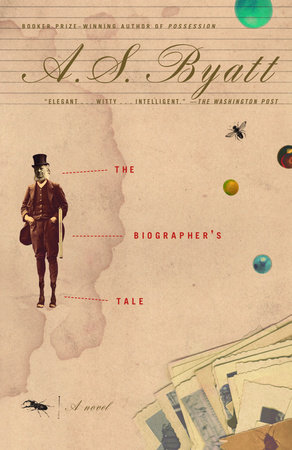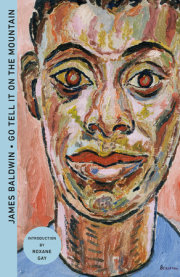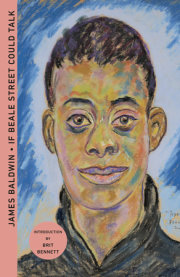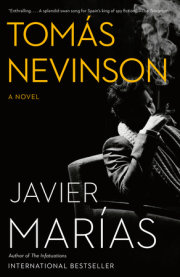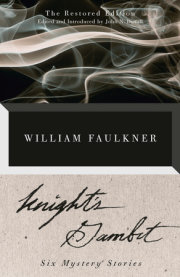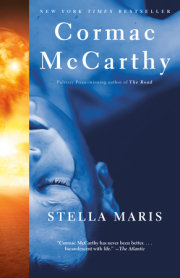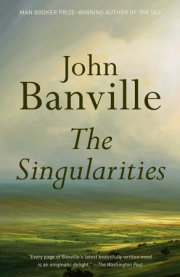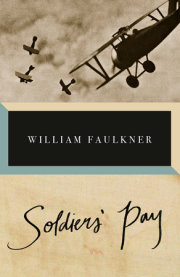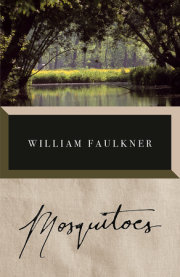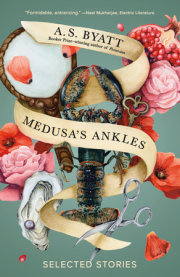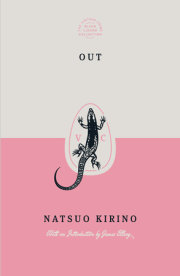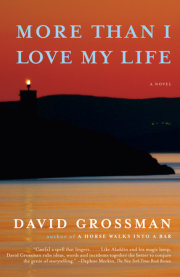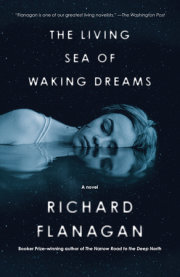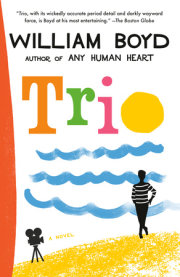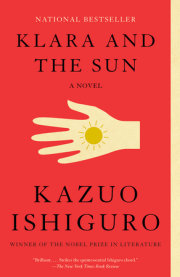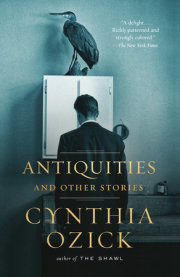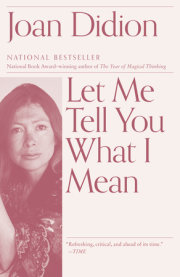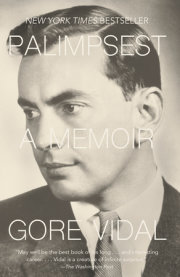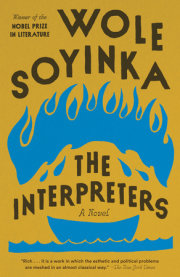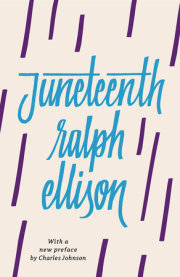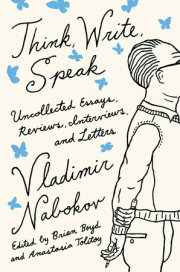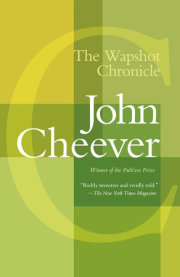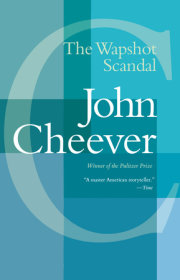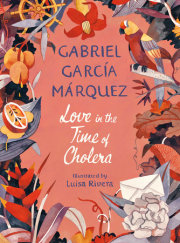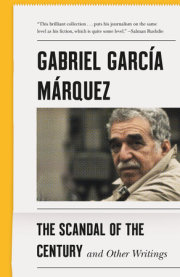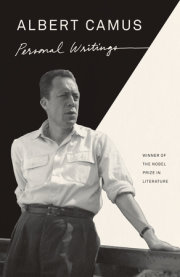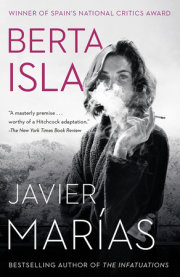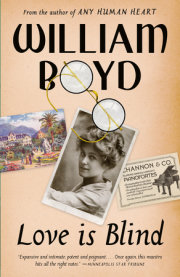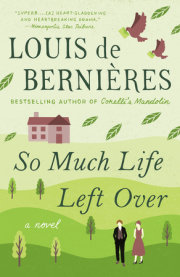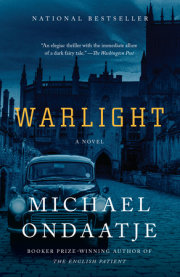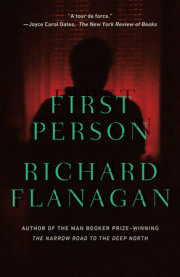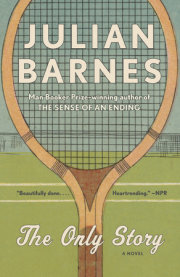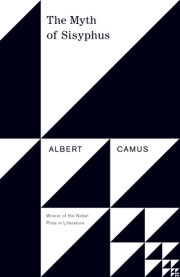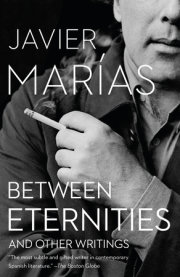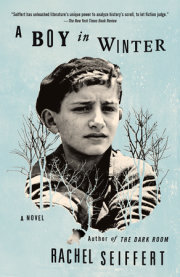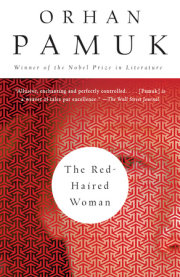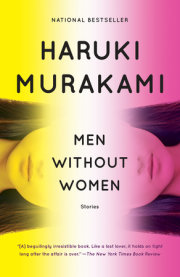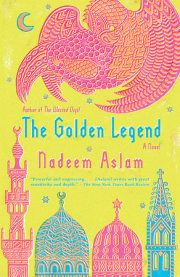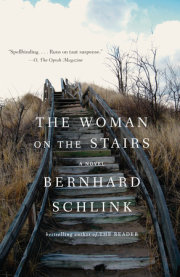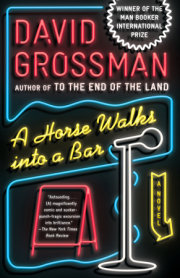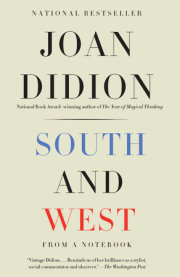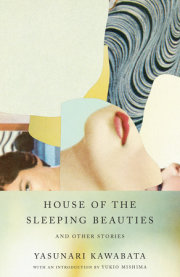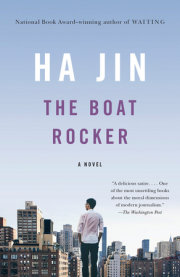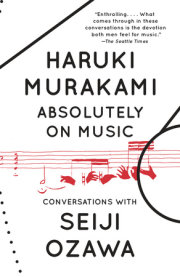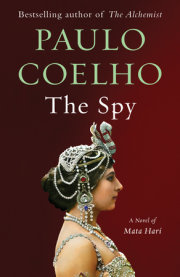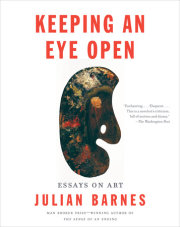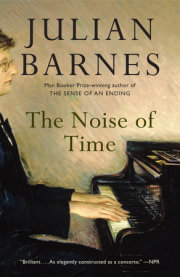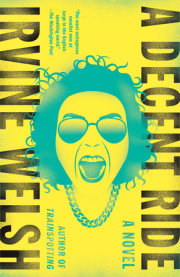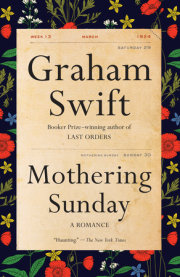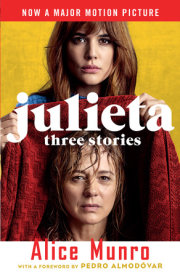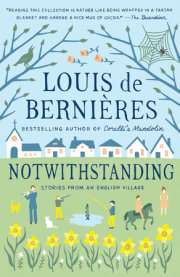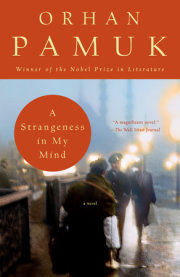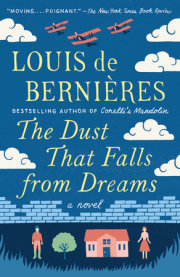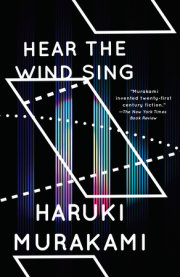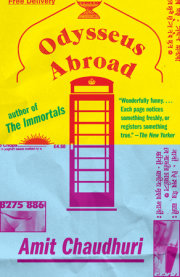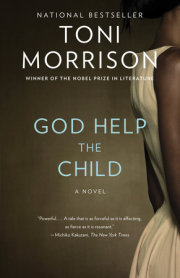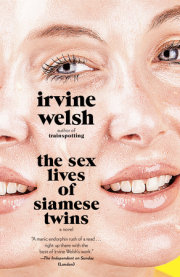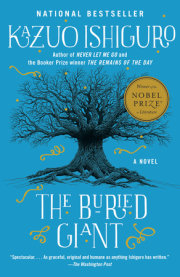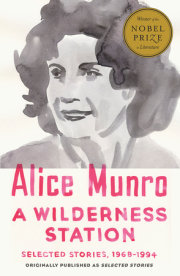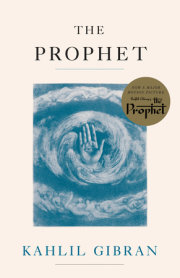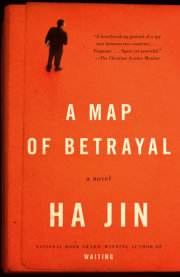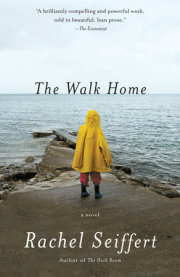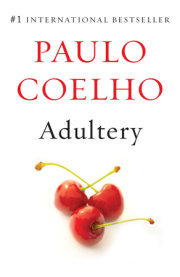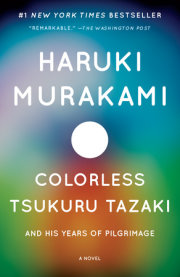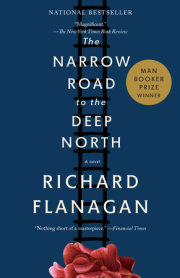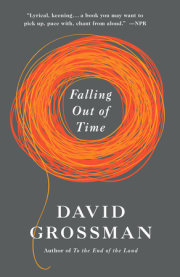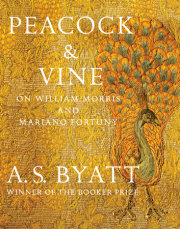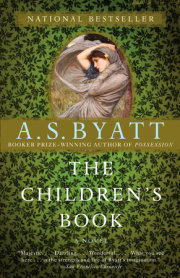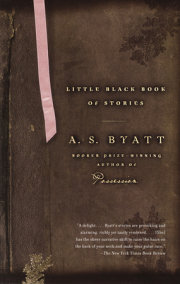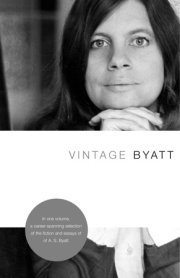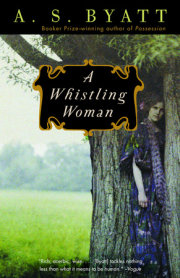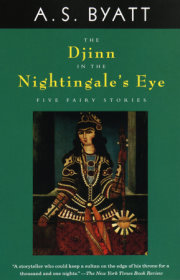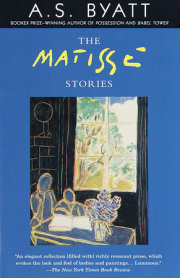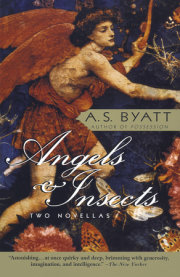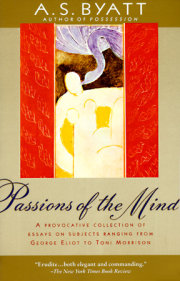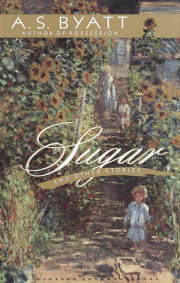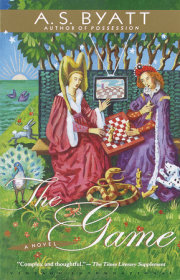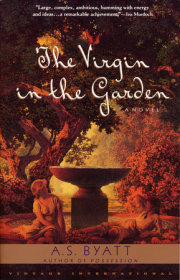Chapter 1
I made my decision, abruptly, in the middle of one of Gareth Butcher's famous theoretical seminars. He was quoting Empedocles, in his plangent, airy voice. "Here sprang up many faces without necks, arms wandered without shoulders, unattached, and eyes strayed alone, in need of foreheads." He frequently quoted Empedocles, usually this passage. We were discussing, not for the first time, Lacan's theory of morcellement, the dismemberment of the imagined body. There were twelve postgraduates, including myself, and Professor Ormerod Goode. It was a sunny day and the windows were very dirty. I was looking at the windows, and I thought, I'm not going to go on with this anymore. Just like that. It was May 8th 1994. I know that, because my mother had been buried the week before, and I'd missed the seminar on Frankenstein.
I don't think my mother's death had anything to do with my decision, though as I set it down, I see it might be construed that way. It's odd that I can't remember what text we were supposed to be studying on that last day. We'd been doing a lot of not-too-long texts written by women. And also quite a lot of Freud-we'd deconstructed the Wolf Man, and Dora. The fact that I can't remember, though a little humiliating, is symptomatic of the "reasons" for my abrupt decision. All the seminars, in fact, had a fatal family likeness. They were repetitive in the extreme. We found the same clefts and crevices, transgressions and disintegrations, lures and deceptions beneath, no matter what surface we were scrying. I thought, next we will go on to the phantasmagoria of Bosch, and, in his incantatory way, Butcher obliged. I went on looking at the filthy window above his head, and I thought, I must have things. I know a dirty window is an ancient, well-worn trope for intellectual dissatisfaction and scholarly blindness. The thing is, that the thing was also there. A real, very dirty window, shutting out the sun. A thing.
I was sitting next to Ormerod Goode. Ormerod Goode and Gareth Butcher were joint Heads of Department that year, and Goode, for reasons never made explicit, made it his business to be present at Butcher's seminars. This attention was not reciprocated, possibly because Goode was an Anglo-Saxon and Ancient Norse expert, specialising in place-names. Gareth Butcher did not like dead languages, and was not proficient in living ones. He read his Foucault and Lacan in translation, like his Heraclitus and his Empedocles. Ormerod Goode contributed little to the seminars, beyond corrections of factual inaccuracies, which he noticed even when he appeared to be asleep. No one cared much for these interventions. Inaccuracies can be subsumed as an inevitable part of postmodern uncertainty, or play, one or the other or both.
I liked sitting next to Goode-most of the other students didn't-because he made inscrutable notes in ancient runes. Also he drew elaborate patterns of carved, interlaced plants and creatures-Celtic, Viking, I didn't know-occasionally improper or obscene, always intricate. I liked the runes because I have always liked codes and secret languages, and more simply, because I grew up on Tolkien. I suppose, if the truth were told, I should have to confess that I ended up as a postgraduate student of literature because of an infantile obsession with Gandalf's Middle Earth. I did like poetry too, and I did-in self-defence-always know Tolkien's poems weren't the real thing. I remember discovering T. S. Eliot. And then Donne and Marvell. Long ago and far away. I don't know, to this day, if Ormerod Goode loved or despised Tolkien. Tolkien's people are sexless and Goode's precisely shadowed graffiti were anything but. Plaisir, consommation, jouissance. Glee. He was-no doubt still is-a monumentally larger man. He has a round bald cranium, round gold glasses round round, darkly brown eyes, a round, soft mouth, several chins, a round belly carried comfortably on pillars of legs between columnar arms. I think of him, always, as orotund Ormerod Goode, adding more Os to his plethora, and a nice complex synaesthetic metaphor-an accurate one-to my idea of him. Anyway, there I was, next to him, when I made my decision, and when I took my eyes away from the dirty glass there was his BB pencil, hovering lazily, tracing a figleaf, a vine, a thigh, hair, fingers, round shiny fruit.
I found myself walking away beside him, down the corridor, when it was over. I felt a need to confirm my decision by telling someone about it. He walked with a rapid sailing motion, lightly for such a big man. I had almost to run to keep up with him. I should perhaps say, now, that I am a very small man. "Small but perfectly formed" my father would say, several times a day, before his disappearance. He himself was not much bigger. The family name is Nanson; my full name is Phineas Gilbert Nanson-I sign myself always Phineas G. Nanson. When I discovered-in a Latin class when I was thirteen-that nanus was the Latin for dwarf, cognate with the French nain, I felt a frisson of excited recognition. I was a little person, the child of a little person, I had a name in a system, Nanson. I have never felt anything other than pleasure in my small, delicate frame. Its only disadvantage is the number of cushions I need to see over the dashboard when driving. I am adept and nimble on ladders. But keeping up with Ormerod Goode's lazy pace was a problem. I said, into his wake, "I have just made an important decision."
He stopped. His moon-face considered mine, thoughtfully.
"I have decided to give it all up. I've decided I don't want to be a postmodern literary theorist."
"We should drink to that," said Ormerod Goode. "Come into my office."
His office, like the rest of our run-down department, had dirty windows, and a dusty, no-coloured carpet. It also had two high green leather wing-chairs, a mahogany desk and a tray of spotless glasses which he must have washed himself. He produced a bottle of malt whisky from a bookcase. He poured us each a generous glass, and enquired what had led to this decision, and was it as sudden as it appeared. I replied that it had seemed sudden, at least had surprised me, but that it appeared to be quite firm. "You may be wise," said Ormerod Goode. "Since it was a bolt from the blue, I take it you have no ideas about what you will do with the open life that now lies before you?"
I wondered whether to tell him about the dirty window. I said, "I felt an urgent need for a life full of things." I was pleased with the safe, solid Anglo-Saxon word. I had avoided the trap of talking about "reality" and "unreality" for I knew very well that postmodernist literary theory could be described as a reality. People lived in it. I did, however, fatally, add the Latin-derived word, less exact, redundant even, to my precise one. "I need a life full of things," I said. "Full of facts."
"Facts," said Ormerod Goode. "Facts." He meditated. "The richness," he said, "the surprise, the shining solidity of a world full of facts. Every established fact-taking its place in
a constellation of glittering facts like planets in an empty heaven, declaring here is matter, and there is vacancy-every established fact illuminates the world. True scholarship once aspired to add its modest light to that illumination. To clear a few cobwebs. No more."
His round eyes glowed behind his round lenses. I found myself counting the Os in his pronouncements, as though they were coded clues to a new amplitude. The Glenmorangie slid like smooth flame down my throat. I said that a long time ago I had been in love with poetry, but that now I needed things, facts. "Verbum caro factum est," said Ormerod Goode opaquely. "The art of biography is a despised art because it is an art of things, of facts, of arranged facts. By far the greatest work of scholarship in my time, to my knowledge, is Scholes Destry-Scholes's biographical study of Sir Elmer Bole. But nobody knows it. It is not considered. And yet, the ingenuity, the passion."
I remarked, perhaps brashly, that I had always considered biography a bastard form, a dilettante pursuit. Tales told by those incapable of true invention, simple stories for those incapable of true critical insight. Distractions constructed by amateurs for lady readers who would never grapple with The Waves or The Years but liked to feel they had an intimate acquaintance with the Woolfs and with Bloomsbury, from daring talk of semen on skirts to sordid sexual interference with nervous girls. A gossipy form, I said to Ormerod Goode, encouraged by Glenmorangie and nervous emptiness of spirit. There was some truth in that view, he conceded, rising smoothly from his wing-chair and strolling over to his bookcase. But I should consider, said Ormerod Goode, two things.
Gossip, on the one hand, is an essential part of human communication, not to be ignored. And on the other, a great biography is a noble thing. Consider, he said, the fact that no human individual resembles another. We are not clones, we are not haplodiploid beings. From egg to eventual decay, each of us is unique. What can be nobler, he reiterated, or more exacting, than to explore, to constitute, to open, a whole man, a whole opus, to us? What resources-scientific, intellectual, psychological, historical, linguistic and geographic-does a man-or a woman-not need, who would hope to do justice to such a task? I know, I know, he said, that most biographies are arid or sugary parodies of what is wanted. And the true masterpiece-such as Destry-Scholes's magnum opus-is not always recognised when it is made, for biographical readers have taste corrupted both by gossip and by too much literary or political ideology. Now you are about to reconstitute yourself, he said, to move off towards a vita nuova you could do worse than devote a day or two to these volumes.
I was somewhat distracted by counting the Os-which included the oo sounds represented by Us-in Ormerod Goode's words. In the late afternoon gloom he was like some demonic owl hooting de profundis. The sonorous Os were a code, somehow, for something truly portentous. I shook myself. I was more than a little slewed.
So I nodded solemnly, and accepted the loan of the three volumes, still in their original paper wrappers, protected by transparent film. They filled the next two or three giddy days when, having decided what I was not going to do and be, I had to make a new life.
Volume i, A Singular Youth, had a frequently reproduced print of a view of King's College, Cambridge, on the cover.
Volume ii, The Voyager, had a rather faded old photograph of the Bosphorus.
Volume iii, Vicarage and Harem, had a brown picture of some stiff little children throwing and catching a ball under some gnarled old apple trees.
It was all very uninspiring. It was like a publishing version of the neighbour who insists on showing you his holiday snaps, splashes of water long smoothed out, ice-creams long digested and excreted. I flicked through the pages of old photographs reproduced in little clutches in the middle of each book. Scholes Destry-Scholes had been sparing with visual aids, or maybe they had not been considered important in the late 1950s and early '60s. There was a photograph of Sir Prosper Bole, MP, looking like God the Father, and one of the three buttoned-up and staring Beeching sisters with scraped-back hair-"Fanny is on the right." I assumed Fanny was Bole's mother. There was a very bad drawing of a youth at Cambridge, resting his head on his hand. "Elmer (Em) drawn by Johnny Hawthorne during their Lakeland jaunt." There was a map of Somaliland and a map of the Silk Road, and a picture of a ship ("The trusty Hippolyta") listing dangerously. Volume ii had a lot more maps-Turkey, Russia, the Crimea-a cliché of the Charge of the Light Brigade, another of the Covered Bazaar in Constantinople, a photograph of a bust of Florence Nightingale, a ridiculous picture of Lord and Lady Stratford de Redcliffe in fancy dress as Queen Anne grandees receiving Sultan Abdulmecid, and what I took to be Sir Elmer's wedding photographs. He appeared, in a grainy way, to have been darkly handsome, very whiskered, tall and unbending. His wife, who also appeared in a miniature silhouette, in an oval frame ("Miss Evangeline Solway at seventeen years of age"), appeared to have a sweet small face and a diminutive frame. Volume iii was even less rewarding. There were a lot of photographs of frontispieces of Victorian books, of poetry and fairy stories. A lot more maps, vicarage snapshots and more conventional views of the Bosphorus. They all had that brownish, faded look. I looked on the back flap, then, for information about the author himself. I think most readers do this, get their bearings visually before starting on the real work. I know a man who wrote a dissertation on authors' photos on the back of novels, literary and popular. There was no photograph of Scholes Destry-Scholes. The biographical note was minimal.
Scholes Destry-Scholes was born in Pontefract, Yorkshire, in 1925. He is working on further volumes of this Life.
Volumes ii and iii added critical encomia for the previous volumes to this meagre description.
And so I began reading, in a mood at once a grey-brown smoky penumbra, induced by the illustrations, and full of jagged shafts of bright lightning on purplish vacancy, induced by my own uncertain future. Odd lines of Scholes's description of Bole's life have become for me needle-like mnemonics, recalling alternate pure elation and pure panic, purely my own, as Bole prepares to fail his Little Go, or sneaks out to stow away on a vessel bound for the Horn of Africa. Most of these mnemonics are associated with Volume i. For it has to be said that as I progressed, the reading became compulsive, the mental dominance of both Bole and Destry-Scholes more and more complete. I do not pretend to have discovered even a quarter of the riches of that great book on that first gulping and greedy reading. Destry-Scholes had, among all the others, the primitive virtue of telling a rattling good yarn, and I was hooked. And he had that other primitive virtue, the capacity to make up a world in every corner of which his reader would wish to linger, to look, to learn.
Copyright © 2001 by A. S. Byatt. All rights reserved. No part of this excerpt may be reproduced or reprinted without permission in writing from the publisher.

